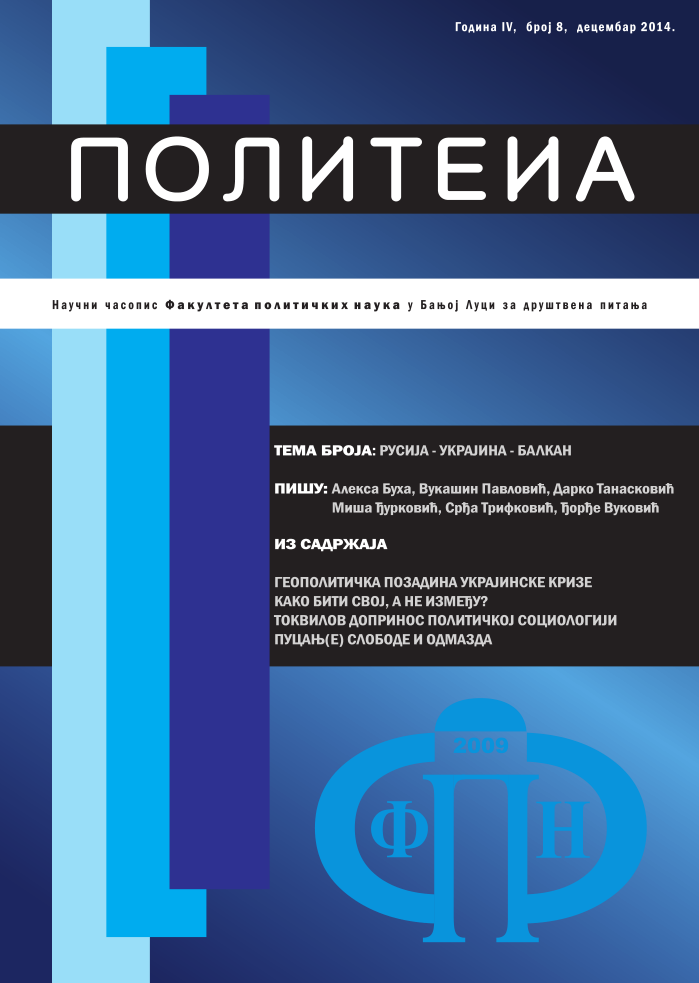Парламентрани избори у Србији 2014. године - политичка рокада
Serbian parliamentary elections 2014: Political 'castling move'
Author(s): Milan N. Jovanović, Dušan VučićevićSubject(s): Politics, Political Sciences, Electoral systems
Published by: Fakultet političkih nauka Univerziteta u Banjoj Luci
Keywords: elections;election results; political consequences;
Summary/Abstract: Tenth elections for the National Assembly of the Republic of Serbia since the reestablishment of a multiparty system were held on March 16th, 2014, under a proportional electoral system. Electoral model essentially established in 2000 also included a single electoral district, closed party lists, five percent electoral threshold for non-minority parties and a use of D'Hondt formula for distribution of seats. Most important results of the March elections include: the lowest voter turnout and close to half of the votes won by the Serbian Progressive Party (which, in turn, gave them 63% of parliament members). Moreover, more than 80 percent of the seats was won by lists led by governing parties, i. e. Progressive or Socialist party. Elections were also not just a disaster for Democratic party, but also for Democratic Party of Serbia, Liberal Democratic Party, and United Regions of Serbia, which all lost seats in the National Assembly. Traditional success of the minority parties of most numerous national minorities (i.e. Hungarians, Bosniaks and Albanians) was noted. Also, for the first time, the parliament will convene without so-called sovereignists and opponents of European integration process. Finally, March elections were marked by a large number of squandered votes.
Journal: Politeia - Naučni časopis Fakulteta političkih nauka u Banjoj Luci za društvena pitanja
- Issue Year: 4/2014
- Issue No: 8
- Page Range: 301-328
- Page Count: 28
- Language: Serbian

